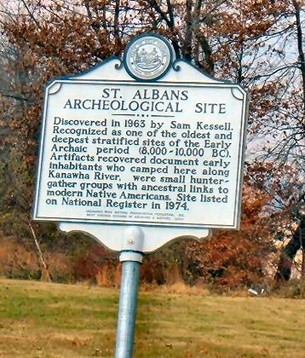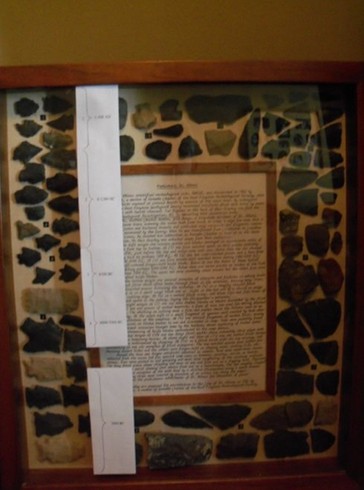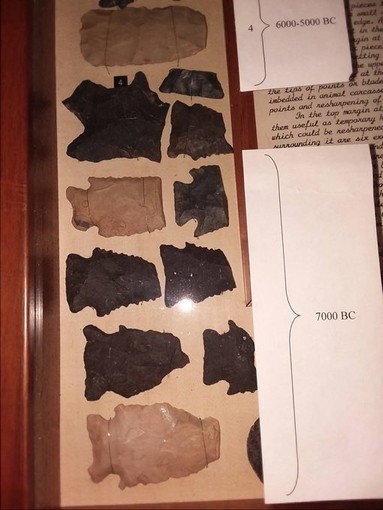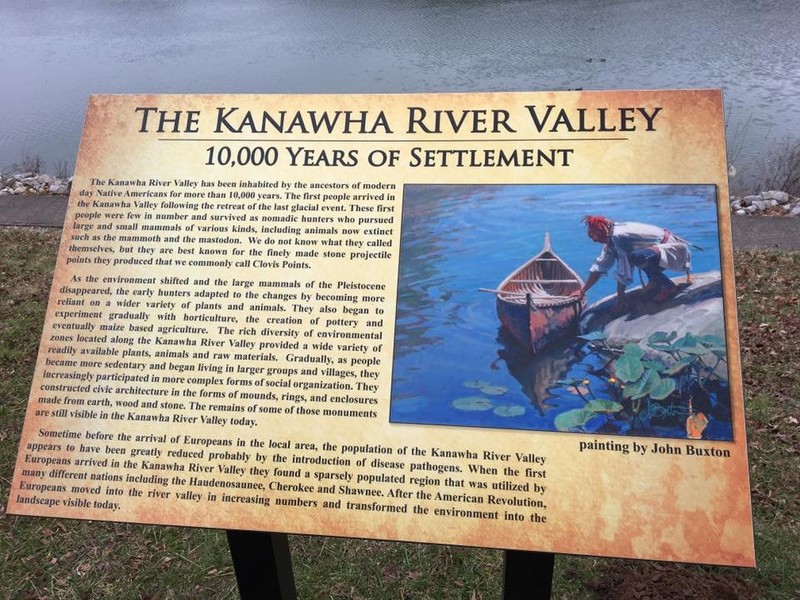St. Albans Archaeological Site
Introduction
Text-to-speech Audio
Images
Site Marker

Arrow heads (points) and fragments found at the Archaeological Site. Located at the St. Alans Historical Society museum.

Close-up of arrow heads (points) and fragments found at the Archaeological Site

Native American sign erected at the St. Albans Roadside Park in 2017

Backstory and Context
Text-to-speech Audio
In 1963, Samuel D. Kessell found artifacts on the Kanawha River bank near the West Virginia State Department of Highways maintenance garage on MacCorkle Avenue SW, St. Albans, WV. After excavations organized by West Virginia Archaeological and Economic Survey (1964-1966), Marshall University, Cultural Analysis Inc., and colleges in Michigan and North Carolina (through the 1990s) it has been determined those artifacts are 8,000 to 6,000 years old. It was placed on the national Register of Historic Places in 1974.
The depth at which the artifacts were found is significant, eighteen feet below the surface with forty-one different zones. Each zone where different occupational artifacts were found were separated by sterile sand or clay; meaning there were no artifacts found in the sand or clay. This archaeological site was unique because it is one of the deepest stratified (arranged in layers) sites in North America.
Sign states:
“Discovered in 1963 by Sam Kessell, recognized as one of the oldest and deepest stratified sites of the Early Archaic period (8,000 – 10,000 BC). Artifacts recovered document early inhabitants who camped here along the Kanawha River were small hunter-gather groups with ancestral links to modern Native Americans. Site listed on National Register in 1974”
Among the many artifacts found there were only seven different types of projectile points. This site has helped us to understand the early Archaic Period and the early inhabitants of what is now St. Albans, WV.
These seven points were:
1. Kanawha Stemmed Point
2. LeCroy Point
3. St. Albans - Notched Point
4. MacCorkle Stemmed Point
5. Kirk Corner - Notched Point
6. Charleston Corner-Notched Point
7. Kessell Point
Sources
1.http://www.wvencyclopedia.org/articles/153 http://www.wvculture.org/shpo/nr/pdf/kanawha/74002012.pdf
2. "St. Albans History". Vol. 1. Marceline, Mo. Walsorth Publishing Co., 1993. pg. 8
3. Early history of St. Albans. January 03, 2014. Accessed March 28, 2018. http://stalbanshistory.com/History.html. St. Albans Historical Society Web site
